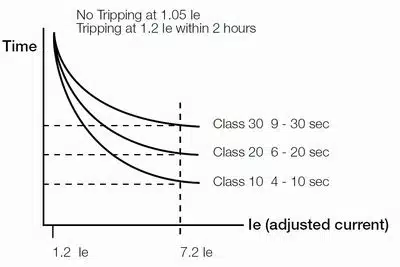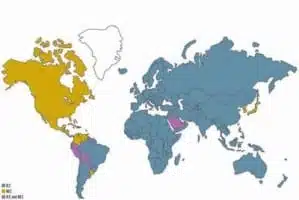Last edit: 03/03/2023
Safety in the workplace in the USA is regulated, at the federal level, by the OSHA (Occupational Safety and Health Administration). States can decide whether or not to adhere to federal directives or make their own.
As in Canada, the responsibility for safety in the workplace lies with the employer, as, in the "The General Duty Clause of the United States Occupational Safety and Health Act (Federal OSHA)" it is stated that:
29 U.S.C. § 654, 5(a)1: Each employer shall furnish to each of his employees employment and a place of employment which are free from recognized hazards that are causing or are likely to cause death or serious physical harm to his employees.
NFPA 70 (or NEC, National Electrical Code) is the reference electrical standard for North America, and the other main electrical standards are based on this:
- Canadian Electrical Code (C.E.C.): the equivalent to the NEC for Canada.
- UL 508A: standard for industrial control panel in the USA.
- C22-2 N°14: equivalent to UL508A for Canada.
Compared to standards derived from IEC 60364 such as BS 7671, the NEC is much more prescriptive in its approach. In the USA it is the standard for electrical safety in general and for fixed installations in particular. The latest version of the NFPA dates back to 2014 and will be updated in 2017.
NFPA 79 is dedicated to “Industrial Machinery”, it is the electrical standard used for the machine board in the USA and is currently very much in line with EN 60204-1 while maintaining some significant differences.
To summarize, the main standards to refer to, from an electrical point of view, for the export of machinery to the USA are the following:
- NFPA 70: requirements for electrical systems (eg machine power supply line).
- NFPA 79: standard of the machines.
- UL 508A: standard for Industrial Control Panels.
- UL98 and UL98A: other USA standards for industrial control panels.
GT Engineering offers compliance consulting and training courses to machinery builders on major US technical standards for electrical safety. If you need our help, don't hesitate to contact us.

The thermal protections are called Time Dependent because the tripping time depends on the intensity of the Overload current. In Europe the shape of these curves are defined by the IEC (International Electrotechnical Commission) or by the IEEE (Institute of Electrical and Electronics Engineers): for example the extremely Inverse curve of the IEC or, again IEC the Very Inverse. The IEEE has for example a moderately Inverse curve and many others. In North America, on the other hand, the NEMA (National Electrical Manufacturers Association) defines 4 main classes or intervention profiles of thermal protection: 5, 10, 20 & 30. Respectively, the inverse time curve class 5, 10, 20 & 30 intervenes in 5, 10, 20 & 30 seconds with a current value equal to 6 times the set protection calibration.
Class 5 is usually used for motors requiring extremely fast tripping.
Class 10 is commonly used to protect artificially cooled motors such as submersible pump motors of low thermal capacity.
Class 20 is usually sufficient for general purpose applications.
Class 30 is usually required for high inertial loads to help prevent nuisance tripping.

The world of electrical systems is not always simple.
Working on an international electrical project engineers are often bewildered by the vast amount of electrical standards and wiring regulations that determine their decisions.
The world can be divided into two areas when it comes to electrical standards: NEC countries and IEC countries.
IEC 60364 is a collection of documents that define the fundamental principles, practices and performance requirements that reflect the European concept of cabling and distribution systems.
The NEC is a set of specific standards intended to be used for the design, installation, and uniform application of electrical system installations based on North American principles and practices.
To be effective, an electrical installation code must be suitable for existing electrical infrastructure, be suitable for a country's electrical safety system, and be uniformly interpreted, enforced, and enforced.
It must also have compatibility with the standards applicable to products whose installation, use and maintenance is intended to be governed by the code. In summary, the following may be indicated on the documents: IEC 60364 and the NEC both establish performance requirements for protection against fire and electric shock, i.e. the protection of people and property.
Both documents address the installation, use and maintenance of cabling systems of the premises and equipment. Both documents are applicable to wiring systems in residential, commercial and industrial premises.
Hazardous locations (explosive atmospheres) are covered only in the NEC and are treated separately in IEC 60079.
No document concerns plants for the generation, transmission or distribution of electricity, nor for those under the exclusive control of electrical or communication users.
IEC 60364 provides broad performance requirements and is not usable as an installation document by system electronics designers, installers, or executing authorities, but can serve as a guide for the development of national wiring regulations.
The NEC is a complete set of electrical systems that can be adopted and implemented without developing additional wiring rules.
Countries that adopt IEC 60364, in whole, or just Chapter 13 on the Fundamental Principles, need to develop additional rules that can be used by system electronics designers, installers and the authorities who enforce these rules. Both codes need effective coordination with the appropriate product standards to be successful in realizing electrical safety.